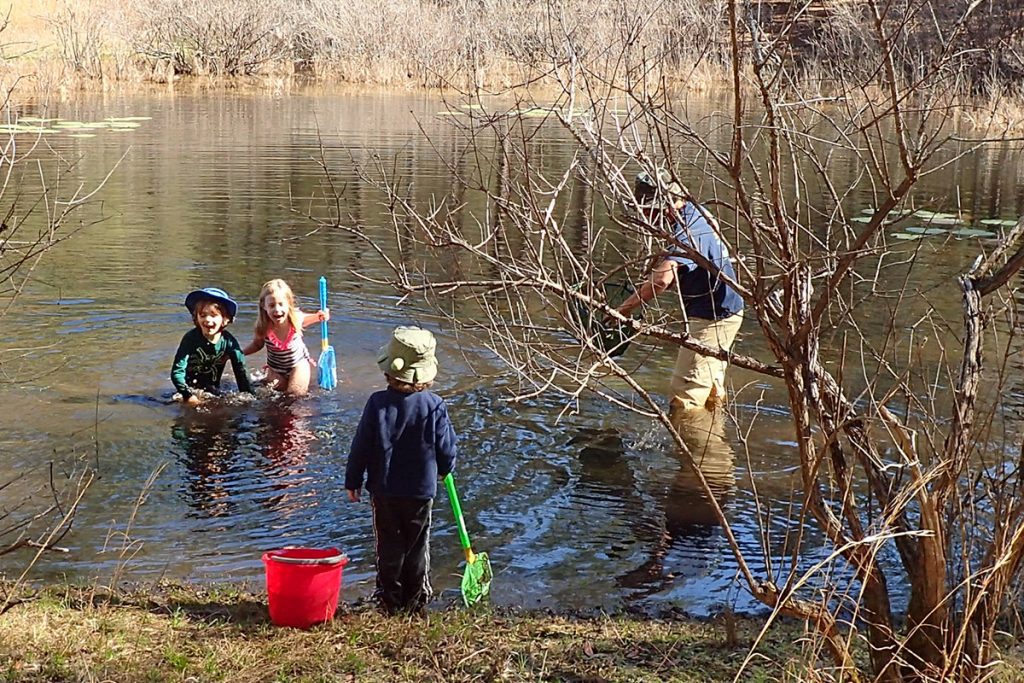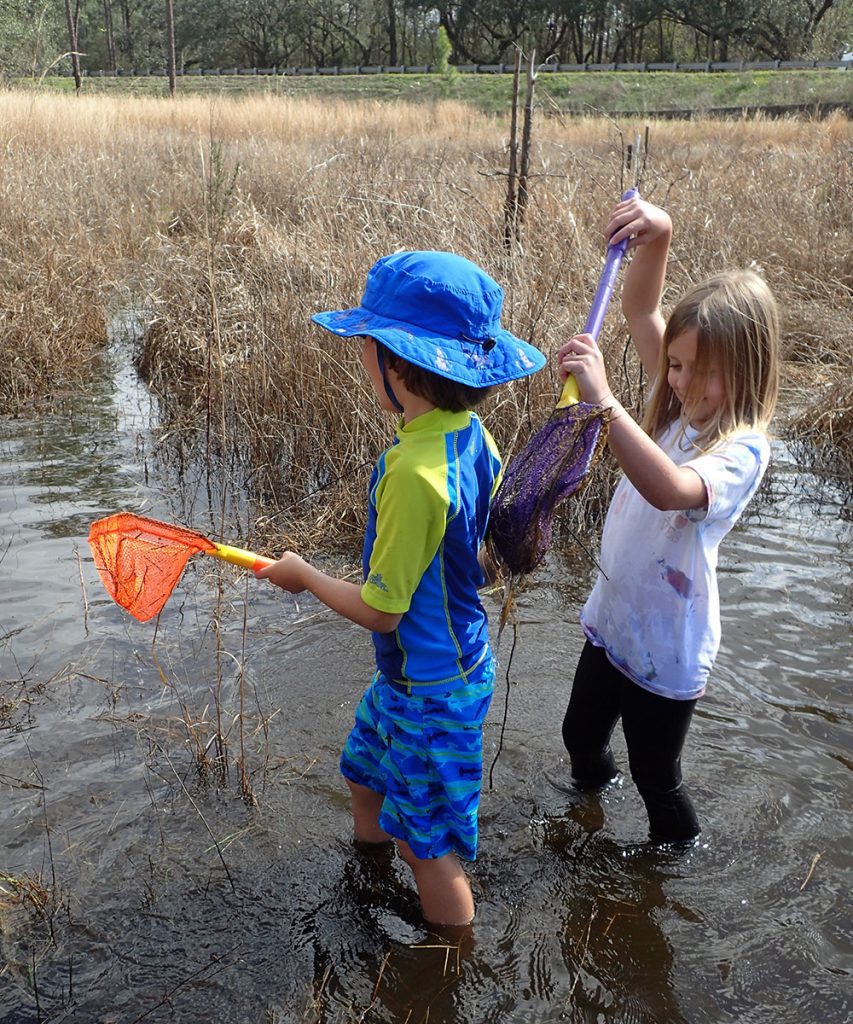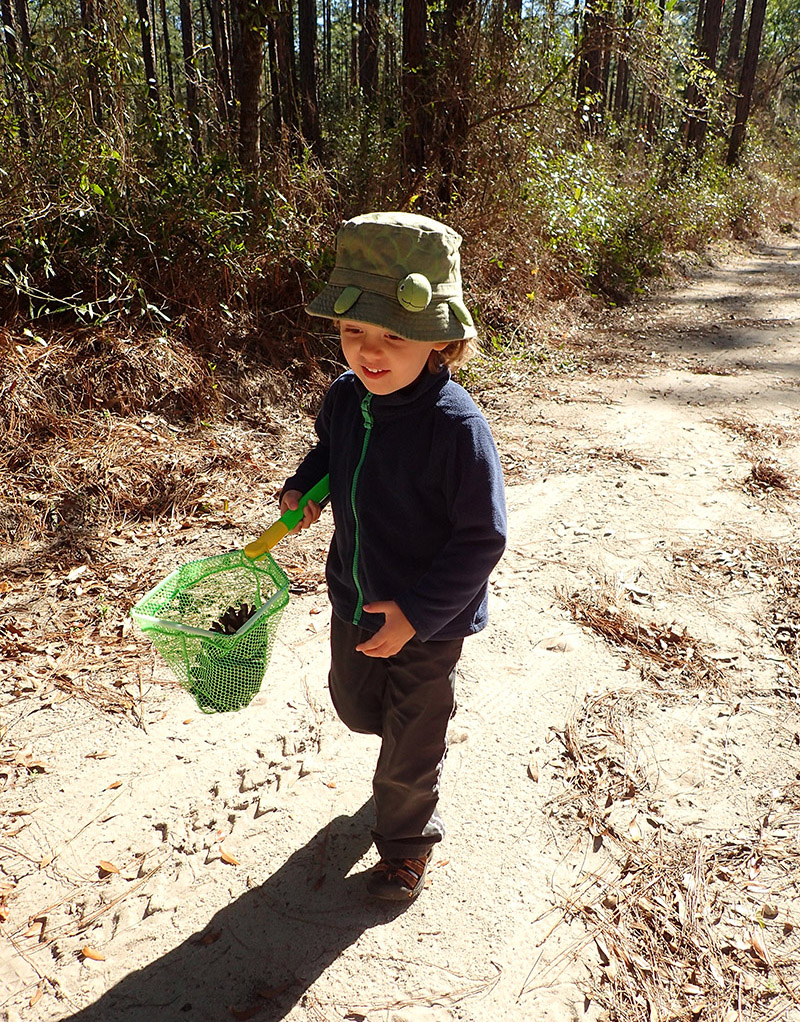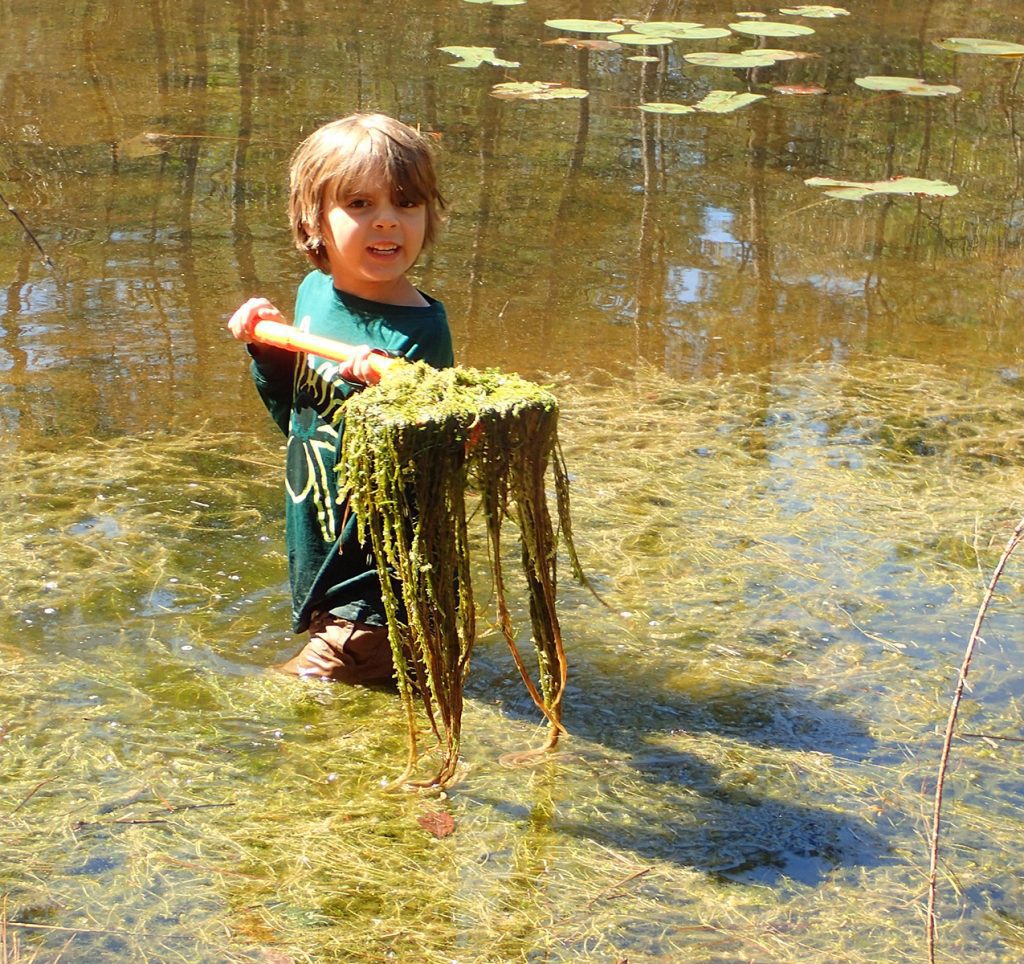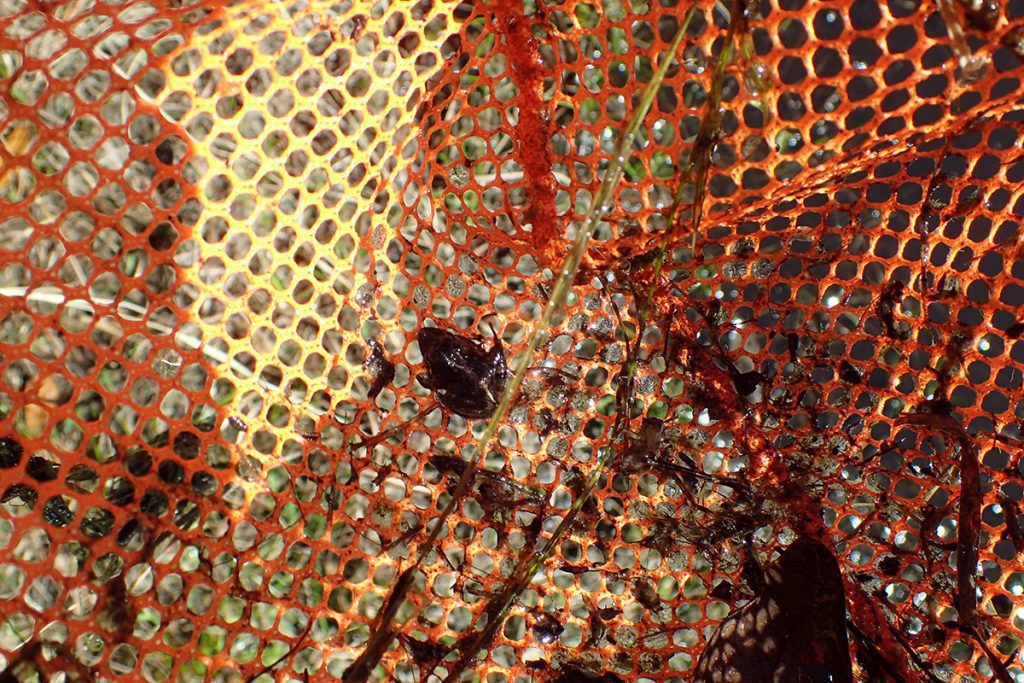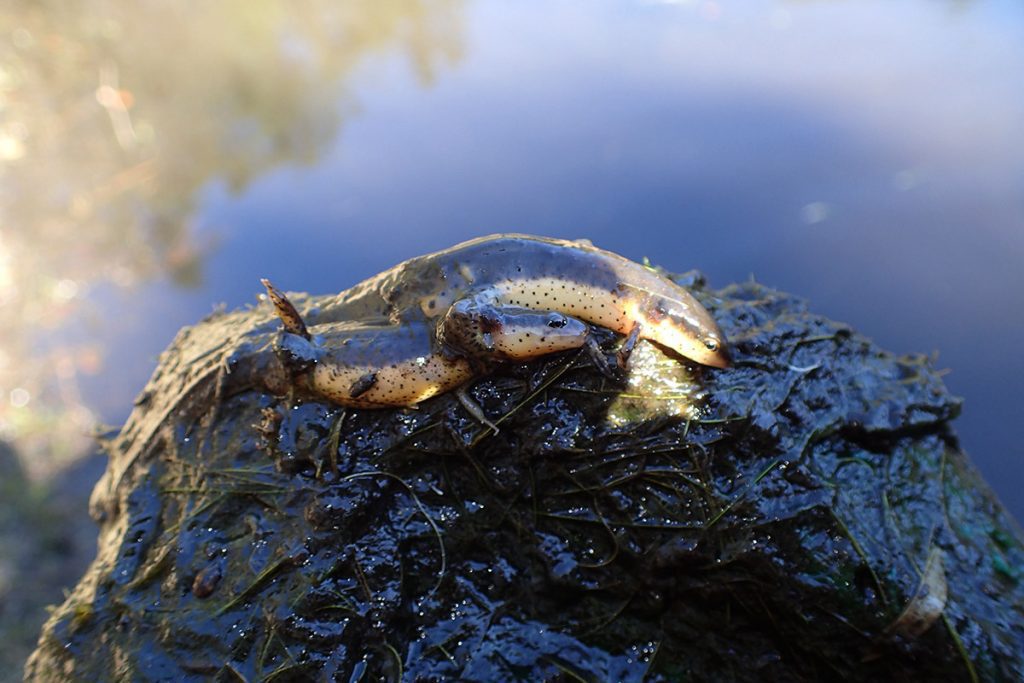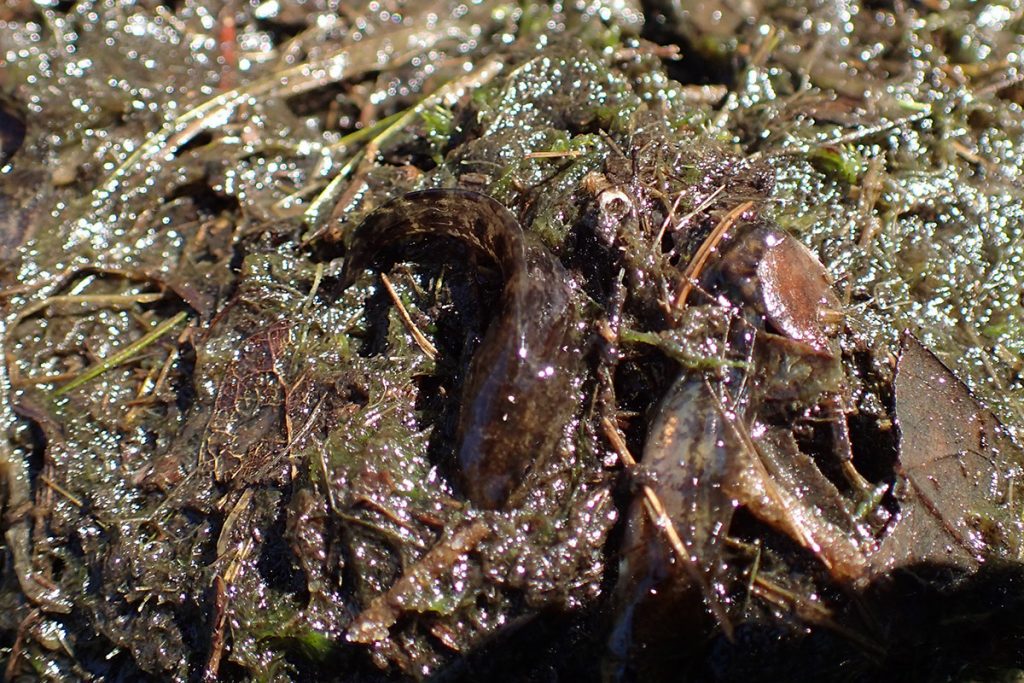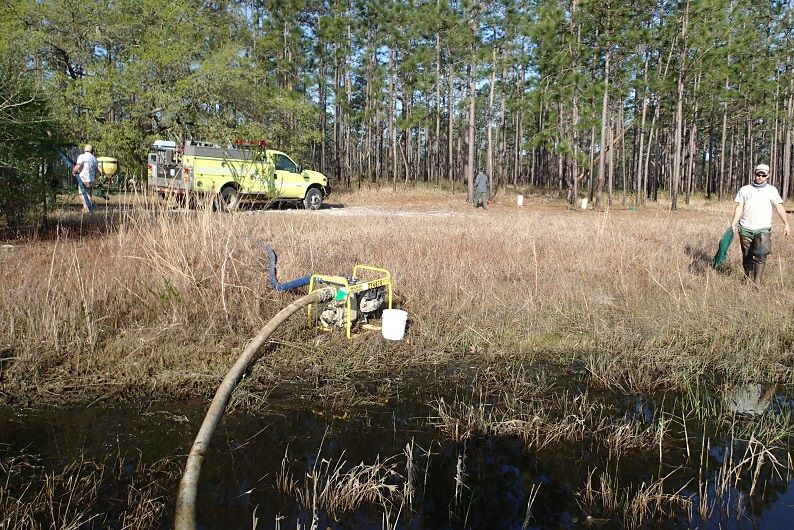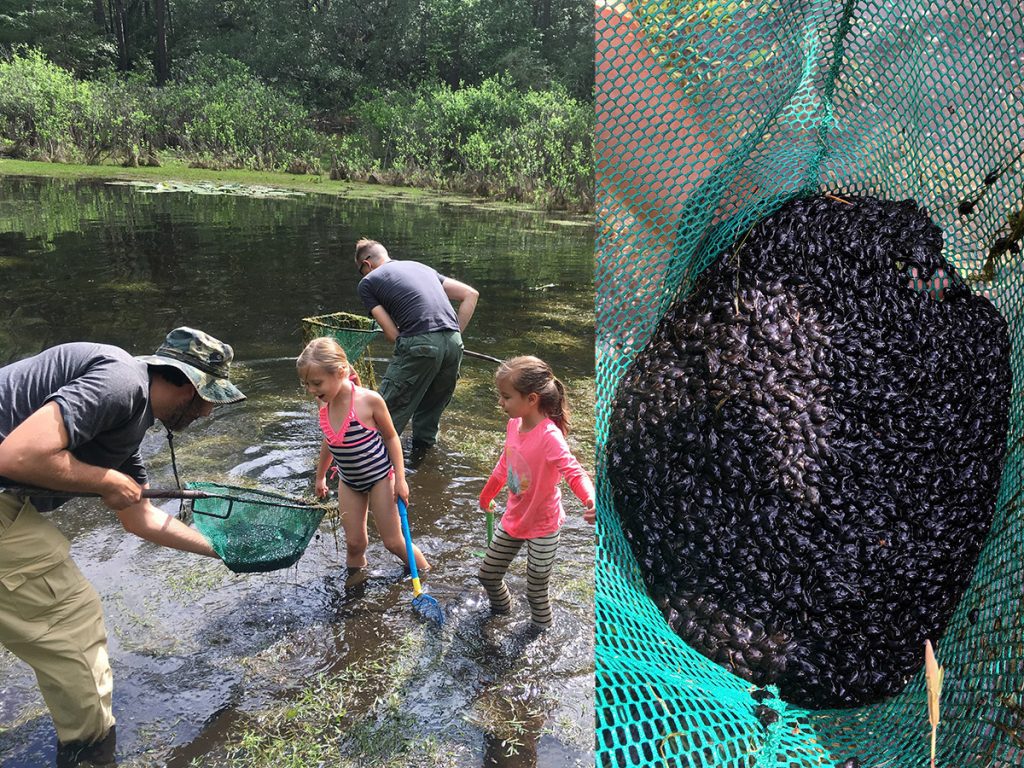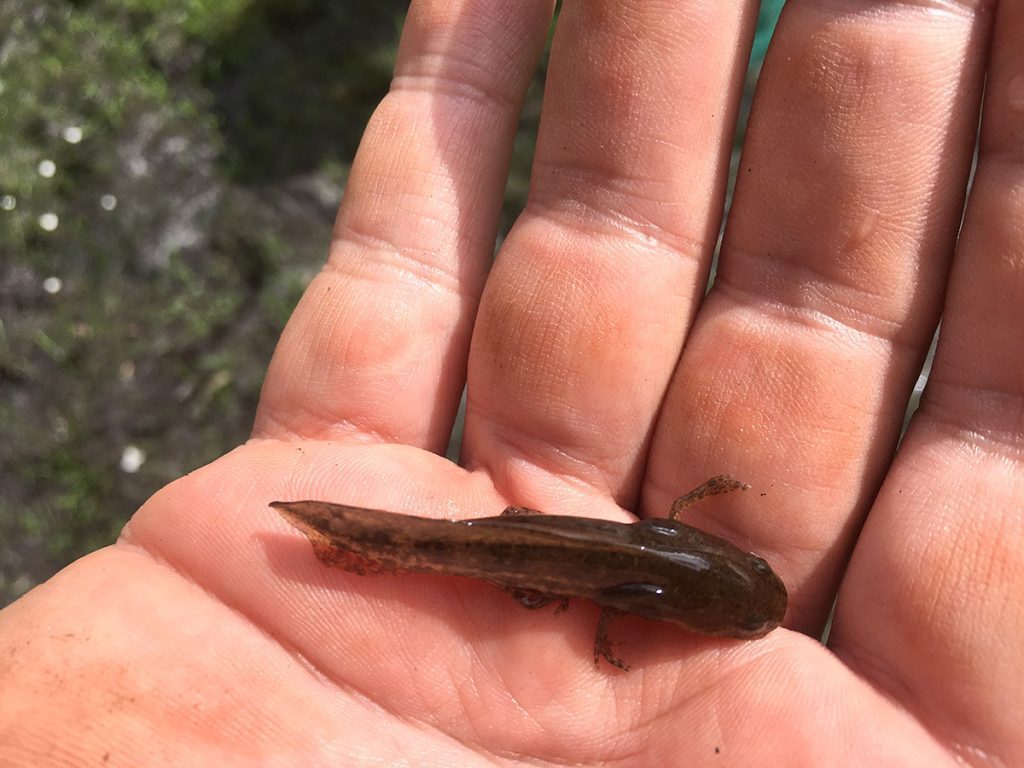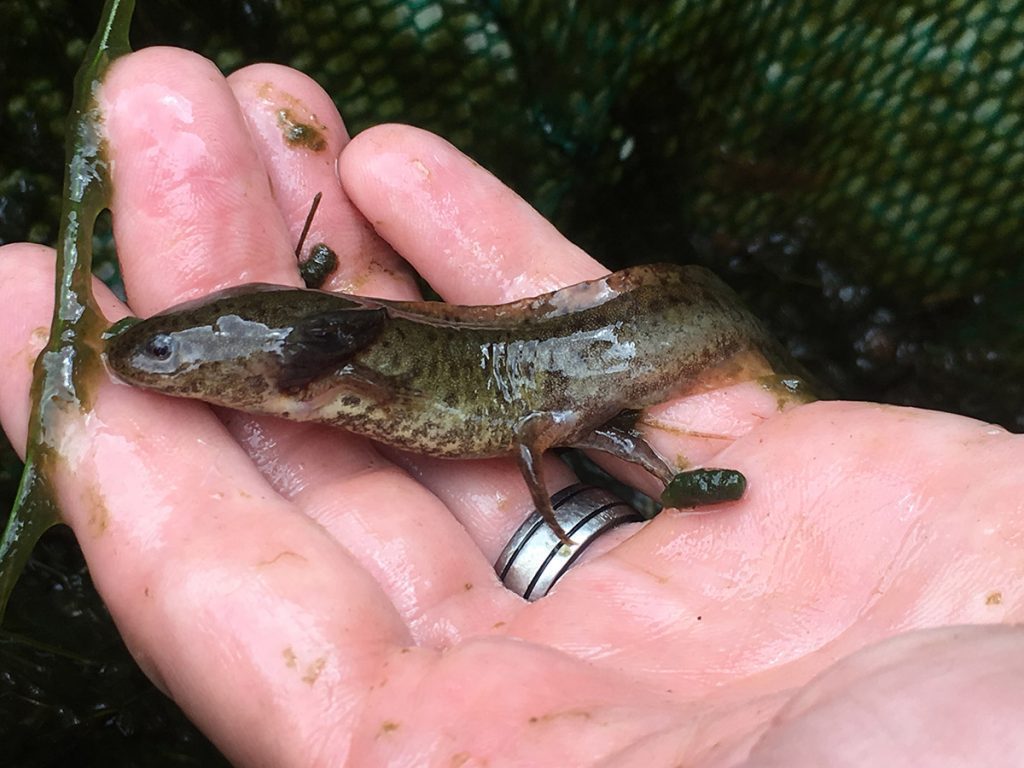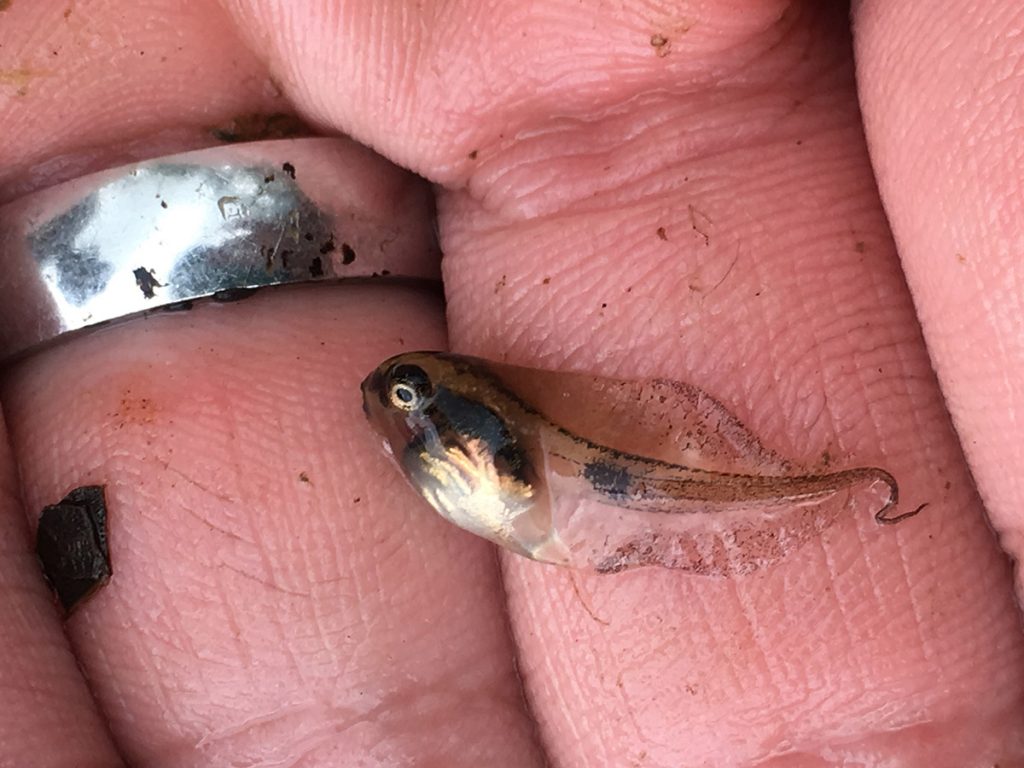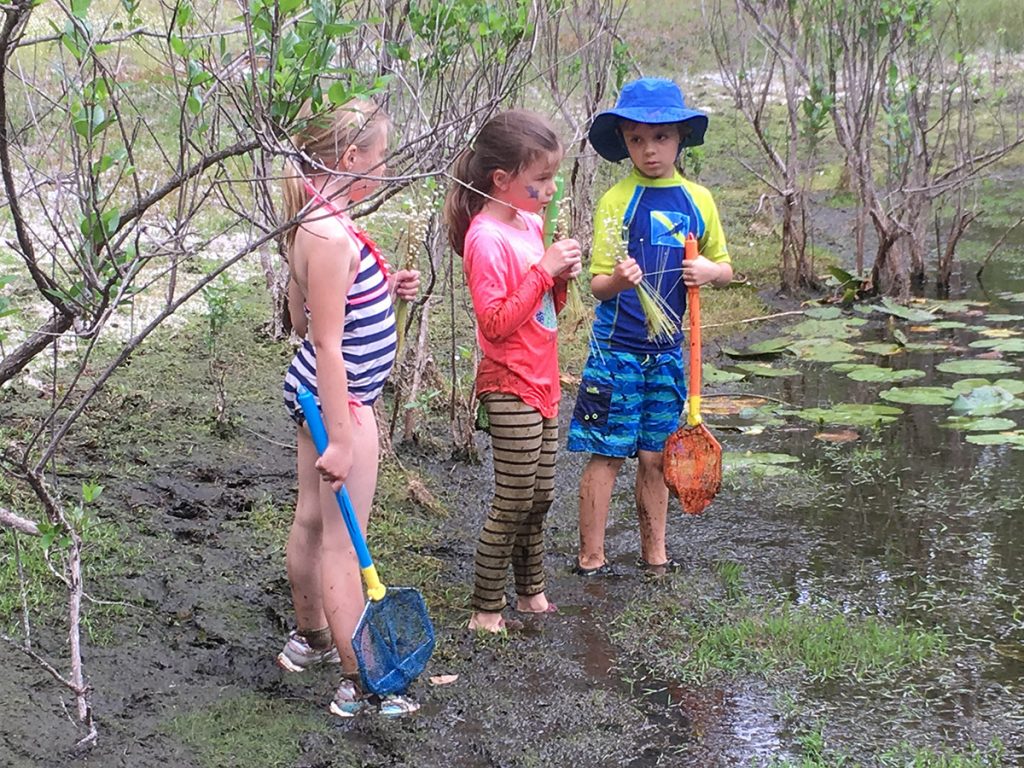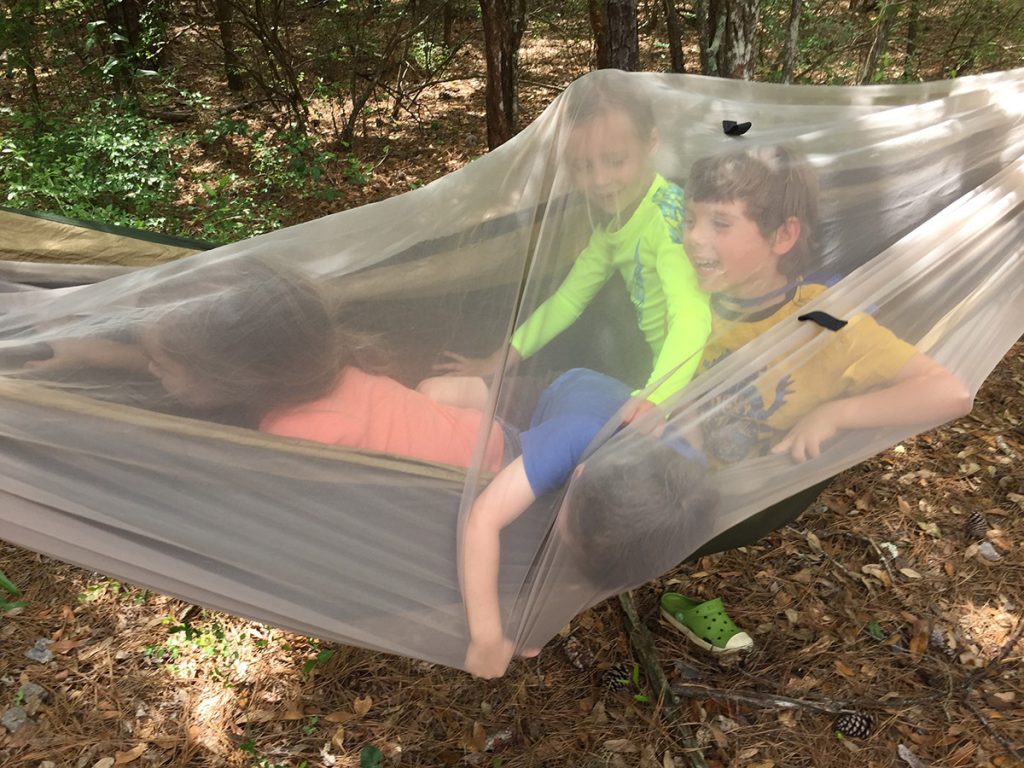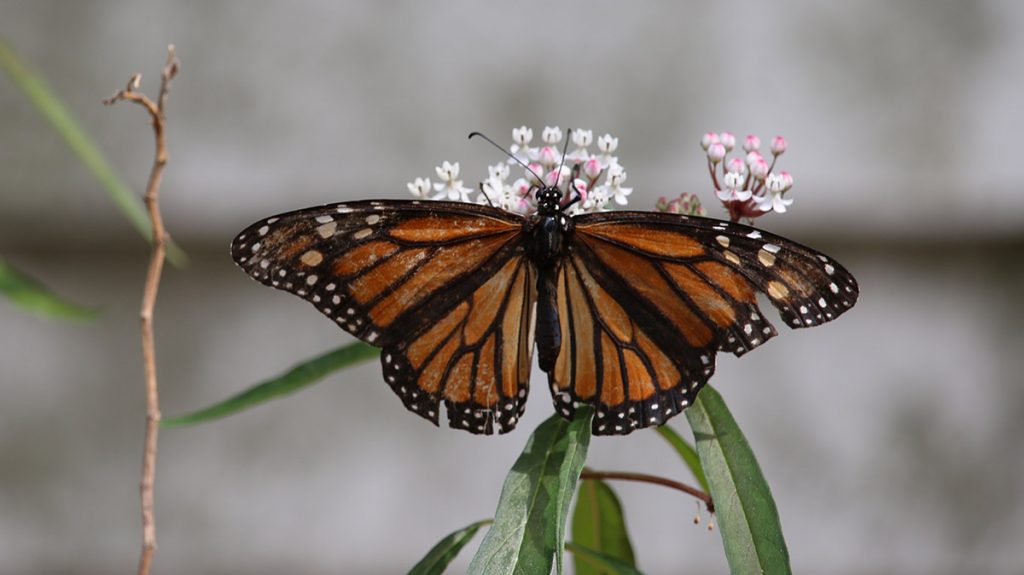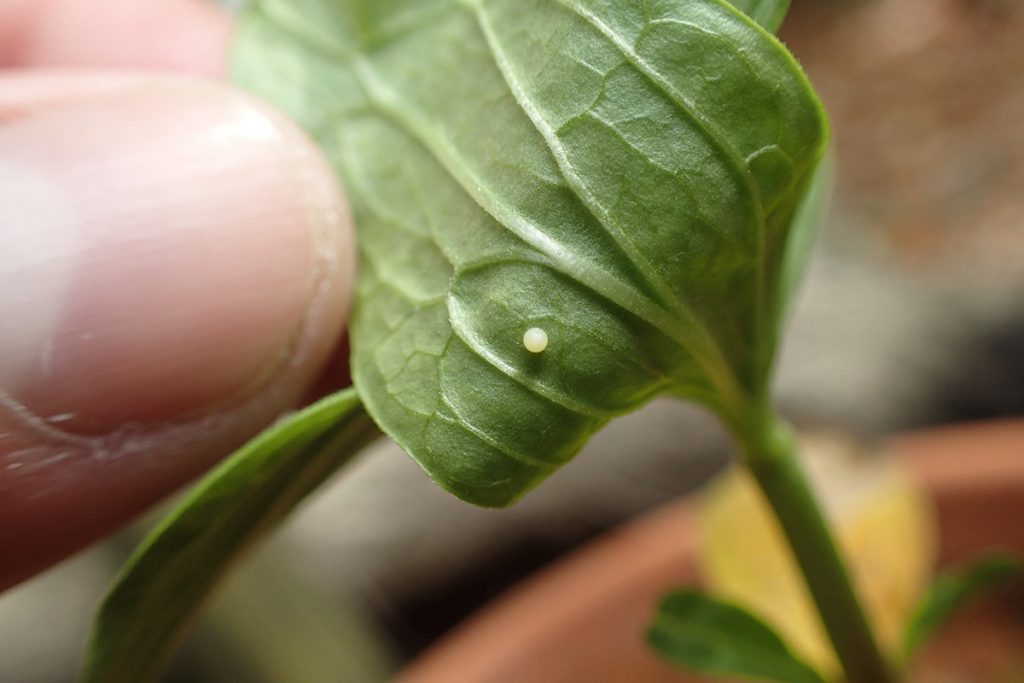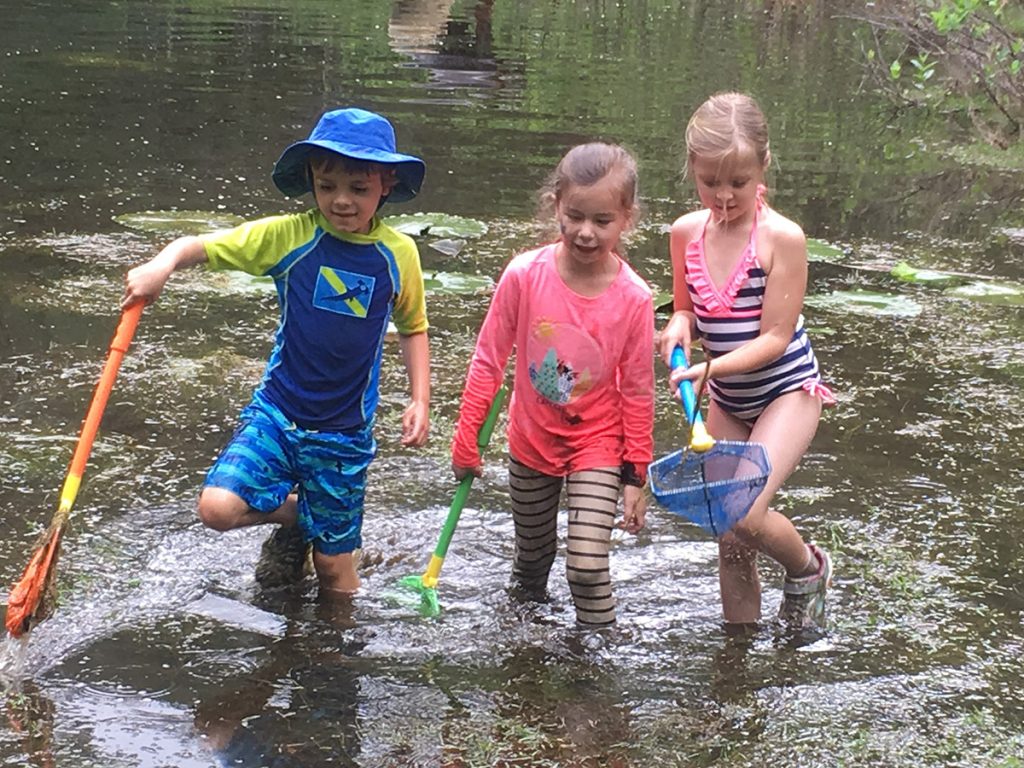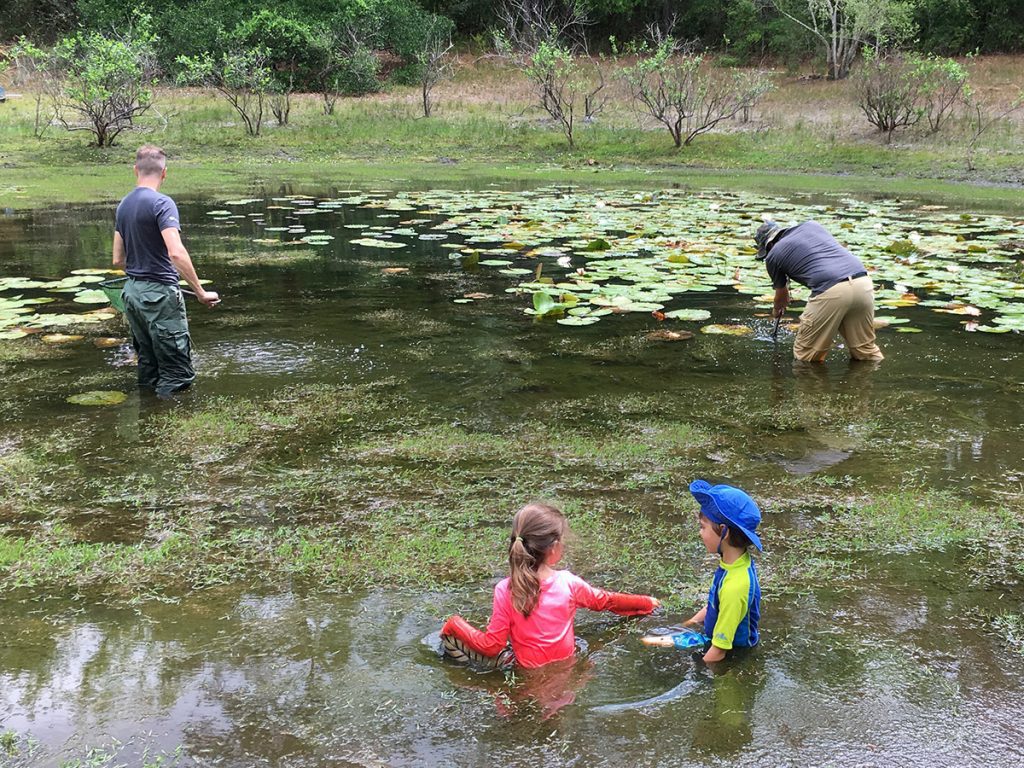(Above) Zoe, Dylan, and Max sit in a field of bog buttons after a day of sampling ephemeral wetlands in the Apalachicola National Forest. Read more about their adventures in citizen science below. Thanks to Dylan’s dad, Don, for letting us use his photo. And thanks to my wife, Amy, for taking most of the photos below.
Rob Diaz de Villegas WFSU Media
After a picnic by the water, the kids all pile into a surprisingly sturdy hammock. Four sets of arms and legs shift and bulge against the hammock’s mosquito netting, laughter mixing with the occasional “Ow!” They’re wearing fresh, dry clothes after a wet and muddy Sunday morning. Citizen science can be dirty work, after all.
We’ve just completed our second sampling for the Coastal Plains Institute’s Adopt an Ephemeral Wetland program. There are over 100 ephemeral wetlands in the Munson Sandhills region of the Apalachicola National Forest, soft spots in the ground that fill and empty with the height of the underlying water table. CPI’s research team relies on volunteer help to net and catalog the amphibians in the ponds. Half of the 200 participants are children.
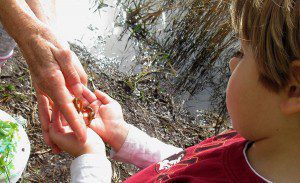 When my son Max was four, he and a group of other children helped CPI release endangered striped newts into nearby wetland. He loved it, and wanted to do it again. It’s an activity with an obvious appeal to a young mind. You’re deep in the woods. Your parents let you splash around in a mucky pond without reproach. You get to handle slimy little creatures. It’s appealing to me as a 40 year old!
When my son Max was four, he and a group of other children helped CPI release endangered striped newts into nearby wetland. He loved it, and wanted to do it again. It’s an activity with an obvious appeal to a young mind. You’re deep in the woods. Your parents let you splash around in a mucky pond without reproach. You get to handle slimy little creatures. It’s appealing to me as a 40 year old!
Adopting an ephemeral wetland, we get to experience a lot of what was fun about releasing newts, but with a few added perks. For one, we’ll see our wetlands through different seasons, possibly over the course of years. We’ll get to know the critters that live there, and see what they do during the wetlands’ wet and dry cycles. And for Max, it’s something he’ll experience with his brother Xavi and his friends Dylan and Zoe. It has all the makings of a formative childhood nature experience.
Why Monitor Ephemeral Wetlands?
At six years old, Max might not yet appreciate one particular aspect of this adventure. By collecting data, we’re contributing to our overall knowledge of local ecology.
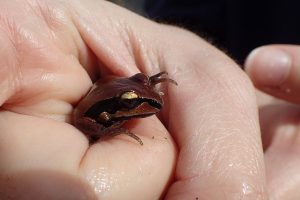
The ornate chorus frog (Pseudacris ornata) is one of the cuter residents of a Munson Sandhills wetland.
As we say again and again on this blog, the longleaf pine ecosystem has a rich diversity of life. The hundreds of plant and animal species of the Munson Sandhills have established countless relationships between one another. A plant might be shelter for one animal, and food for another. To an insect, a frog is a predator; to a snake, it’s a meal. If any one species goes away, relationships are broken, and it sends ripples throughout the ecosystem.
The frogs, newts, salamanders, and toads that we sample are, for part of their lives, residents of the longleaf habitat. But pine uplands are dry, burning on average every two or three years, and amphibians in this forest need water to breed. In the Munson Sandhills, ephemeral wetlands provide that breeding ground. When the ponds are filled, amphibians crawl in and make babies. When the ponds empty, they crawl up into the woods.
The fullness of a wetland is indirectly affected by rainfall. Climatologically, we experience a cycle of wet (El Niño) and dry (La Niña) stretches that last a couple of years or so. The amount of rain that falls over time determines the fullness of the underlying water table. However, we’ve experienced harsher and more frequent droughts over the last few decades. During these extended droughts, the water table stays low, wetlands stay empty for longer than usual, and amphibians don’t replenish their numbers.
The reason the Coastal Plains Institute was releasing striped newts was that, because of these dry stretches, the newts had just about gone extinct within the Apalachicola National Forest. The slimy little critters we have fun netting and counting in our wetlands- they’re vulnerable. And that’s why we count them.
The Munson Sandhills region of the Apalachicola National Forest lies just south of Tallahassee. The dots on the map represent ephemeral wetlands; the red dots have been adopted. Map courtesy Coastal Plains Institute.
Volunteering to Help Science
The Coastal Plains Institute is a family operation. Dr. Bruce Means is the Executive Director, and ephemeral wetland research is overseen by his son and daughter-in-law, Ryan and Rebecca Means. Monitoring 100+ wetlands year round, coordinating the reintroduction of striped newts, and educating the public about it- that’s a lot of work for two people. So, as many scientists do, Ryan and Rebecca rely on citizen scientists to collect information.
Many of these volunteer data collectors are families like mine. As we saw during the striped newt release, or in Ryan and Rebecca’s Project Remote, they’re all about family nature experiences. This seemed like a great fit for us. And, since everything is more fun with friends, we recruited two of Max’s classmates’ families to help with the sampling.
We signed up during the enrollment period earlier this year. The online form asked:
- How many people in your group? How many kids?
- Are you willing to hike up to a mile?
- Do you drive a truck, SUV, or car? Some forest roads are more easily accessed than others.
- How many wetlands would you like to adopt?
After submitting the form, Rebecca followed up with me. We would be sampling with three kindergartners and a three year old, so Rebecca gave us two medium sized wetlands. She figured the amount of time it would take to sample them fell within the kids’ collective attention span.
We attended a training with other families, where Rebecca went over the species we’d encounter, what data we’d record, and showed us how to use the nets. During the training, we mostly caught grass and dragonfly larvae. I wondered- would we catch much more on our own wetlands?
The next Adopt an Ephemeral Wetland registration period will begin in the winter. For more information, you can contact Rebecca Means at cpi.rebecca@gmail.com. You can also sign up for their newsletter.
Our First Ephemeral Wetland Sampling- February 2017
At the training session, Rebecca gave us a packet of information. This included laminated species guides, data logging sheets, and maps to our two wetlands. When you sign up to adopt a wetland, you commit to at least two samplings- one in February or March, and one in April or May. You can sample as much as once per month; any more would be destructive to the habitat.
One Sunday morning in February, we trekked out to our wetlands for the first time with Zoe and her parents, Emily and Ernie. First up, finding the wetlands! We had specified that we would be okay with a short hike, and after about ten or fifteen minutes, we were more or less next to the wetlands. There aren’t any signs marking the wetlands from the trail; however, we could see open spaces through the trees.
From there, we bushwhacked for about a hundred yards or so through the vines and shrubs of the hardwood understory. The kindergartners did fine with this, but Xavi needed a little time to make it through. We usually let him try to navigate semi-challenging outdoor scenarios if he doesn’t seem frustrated by them (and if it’s safe, of course).
Having found our first wetland, we got to work. That is, the parents got to work. This is as much about the experience as it is about ecology education. So, while Ernie and I netted, and Amy and Emily took photos of our catches, the kids explored the “mucky muck” and the “mossy moss.”
The kids would rush to our nets when we caught a newt or a larval salamander. And they tried their hands at netting some of the cricket frogs that hopped from our feet in droves as we walked the water’s edge.
As they get older, they’ll be more involved in data collection. For now, they enjoyed a day getting wet and mucky in the Apalachicola National Forest, and got to know some of the critters that live there. The most important result from our first trip? Max couldn’t wait to come back.
What did we find on our February sampling?
We enter our data into an app called Survey123. After entering the date and wetland ID, we enter the water level for the wetland. The pond was nice and full for our February sampling.
Our two ponds were each “50 swipe” ponds, which means that we’re supposed to swipe our nets 50 times across their bottoms. So Ernie and I each swiped about 25 times.
There are a handful of target species we’re looking to catalog. During this earlier sampling, we caught and released a handful of central newts.
Below is a mole salamander larva:
You’ll notice that many of our photos from this first day are of the animals sitting in the muck in our nets. This made identifying certain species difficult. Starting on the next trip, we’d place them in our hands, where their features would be easier to see.
Our Second Wetland Sampling- April 2017
After our first sampling, I started noticing something on the Adopt an Ephemeral Wetlands Facebook group, and on the Coastal Plains Institute Facebook page. People were starting to find that their wetlands had drained. On one post, I saw that Tall Timbers Research Station brought a water truck to a striped newt repatriation pond. They pumped 3,950 gallons into the pond in mid March. The longer the wetland stayed wet, the more opportunity the endangered newts would have to breed.
We didn’t know if we would have water on our second sampling. Part of the experience is seeing the wetlands empty and fill over the years; and if it was empty, we’d record that data. Still, I was hoping to get in the water and find some newts and tadpoles.
Max, Zoe, and Dylan led the way down the trail, guiding us to the wetlands without any adult input. As we made our way off the trail, we were pretty sure we saw the reflective surface of water through the trees.
There was less water than in February, but it was still pretty full.
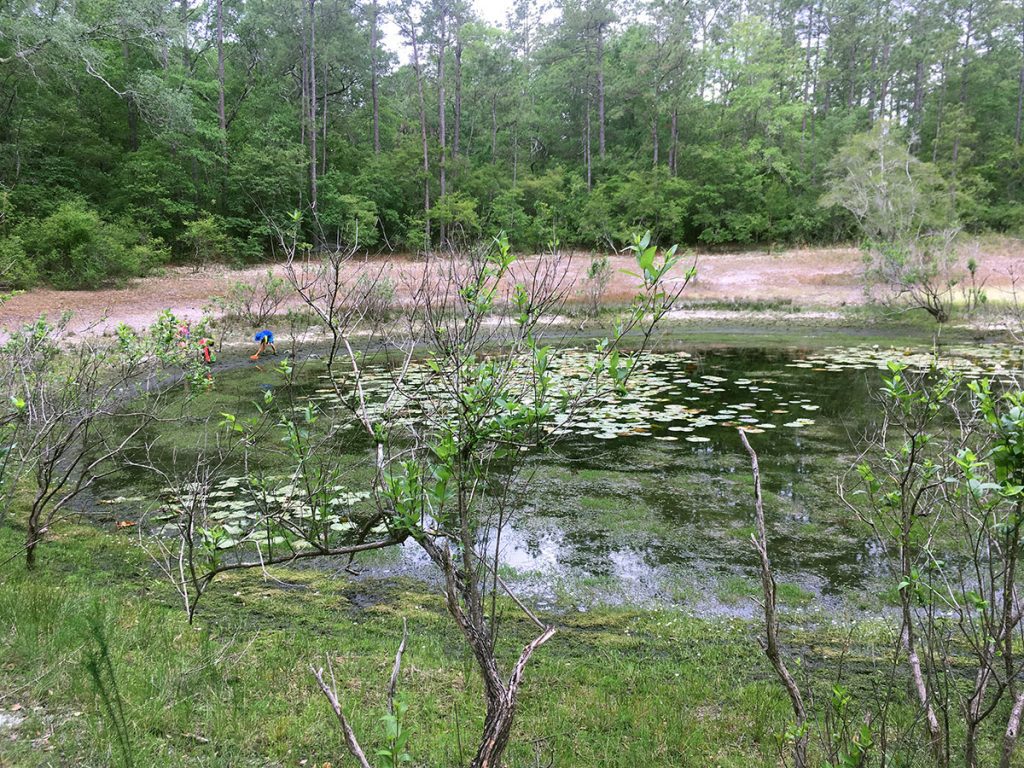
The mud/ sand ring around the edge of the wetland shows how far the water had retreated in recent months. During our February sampling, many of the trees at the edge of the wetland were in the water.
What did we find on our April sampling?
This time, we divided our swipes between myself, Ernie, and Dylan’s dad, Don. And we reduced the number of swipes to about 15 each because of the lower water level. We were trained to agitate the bottom of the wetlands with our nets, as amphibians hide in the bottom muck. So we have to be careful not to over-net the ponds.
While there was less water, it was a warmer time of year and we netted many more critters than in February. For one, there were thousands of what we think were southern toad tadpoles swimming at the center of one pond (both toad species found in the forest have similar looking tadpoles). They aren’t a target species, but the kids were captivated by the mass of tadpoles in the net.
We caught more central newt adults, and one larva:
We also caught mole salamander adults, larva, and paedomorphs. What is a paedomorph? Larval newts and salamanders start out much like frogs and toads, as legless larvae. The adults of some species, however, change their bodies depending on whether they’re living in a wetland or in the uplands at the time. The paedomorph is an adult with visible gills, which it loses when it goes into the forest.
We also caught a few barking tree frog tadpoles, which are kind of cool and translucent:
The children took full advantage of a field of bog buttons by the wetland.
After our sampling, a picnic and some hammock time.
It’s getting a little hot for summer sampling, though I’m curious to see what it’s like then. We’ll be back in the fall to see what’s new on our two wetlands.
Later that Day/ What Are We Learning Here?
That morning, before we left for the wetlands, the last of our monarch butterflies emerged from its chrysalis. After releasing it that afternoon, Xavi wanted to stay out and play for a little bit. While we threw the ball around, the butterfly seemed to return to nectar on our white swamp milkweed (Ascepias perennis).
I grabbed my camera and zoomed in. The first thing I noticed was that a chunk of its wing was missing. Both wings were frayed and seemed to be losing their color. This wasn’t the new monarch we had just released.
It hopped off the flowers and onto the leaves of a nearby tropical milkweed (Asclepias curassavica). It then nectared some more and flew off. I walked over and turned a leaf to see this:
I couldn’t believe it. Moments after we had finished sending off our first wave of monarchs, a second wave had entered our yard. And so many months earlier than last year.
It capped a great day of nature education. We saw examples of metamorphosis: tadpoles and larva that will turn frogs and salamanders, and butterflies that started as caterpillars in our garden. We saw that the arrival of warmer weather brings monarch migrations and more breeding in the wetlands. And we also started to see our wetlands drain into the aquifer.
Max and Xavi are taking in this information with all of their senses. We have books with photos and illustrations depicting butterfly metamorphosis. But these boys have seen caterpillars spin chrysalides and emerge from them changed.
And while I don’t think you need to get wet to learn about wetland ecology, I do think that experiencing it firsthand burns it into your memory in a way that text and photos never could. I like reading about nature, but that knowledge is always stronger when book (or internet) facts are tied to what I see on an amazing day spent outdoors.
And so it is with the kids. They’ll race across the muck to gather around our nets, and maybe hold a tadpole in their hand. They wish on flowers by the water and dig up netfuls of vegetation. These are happy childhood memories. And that’s how nature lovers are made.

